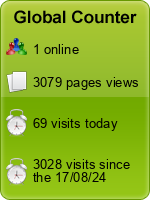Health literacy among senior high school female students with dysmenorrhea
DOI:
https://doi.org/10.33024/minh.v7i1.204Keywords:
Adolescent Girls, Dysmenorrhea, Female Students, Health LiteracyAbstract
Background: Health literacy is still a problem in Indonesia characterized by the low level of health literacy in most of the population aged 15 - 18 years. The incidence of dysmenorrhea at senior high school 1 Cileungsi is very high, reaching 418 female students (63%). The lack of health literacy regarding dysmenorrhea causes knowledge, attitudes, and inappropriate behaviour in treating dysmenorrhea, which can increase the morbidity rate in adolescent girls. Therefore, health literacy regarding dysmenorrhea is very important for adolescent girls so that they can understand and solve the dysmenorrhea problems they experience to improve their health status.
Purpose: To determine the level of health literacy among female students who experience dysmenorrhea especially at senior high school 1 Cileungsi.
Method: This type of research is quantitative descriptive using univariate analysis with a population of all female students who have experienced dysmenorrhea at senior high school 1 Cileungsi. The sampling technique used Proportionate Stratified Random Sampling with a sample of 224 female students who had experienced dysmenorrhea.
Results: This study showed that most female students at senior high school 1 Cileungsi have adequate health literacy regarding dysmenorrhea, namely 117 female students (52.2%). Apart from that, the majority of female students experienced difficulty in applying information regarding appropriate treatment for dysmenorrhea namely 130 female students (58%).
Conclusion: Even though the majority of female students have adequate health literacy, there are still many female students who have inadequate health literacy regarding dysmenorrhea. Therefore, it is hoped that health workers can determine appropriate interventions to overcome health literacy problems.
Downloads
Published
How to Cite
Issue
Section
License
Copyright (c) 2024 Malahayati International Journal of Nursing and Health Science

This work is licensed under a Creative Commons Attribution-ShareAlike 4.0 International License.









